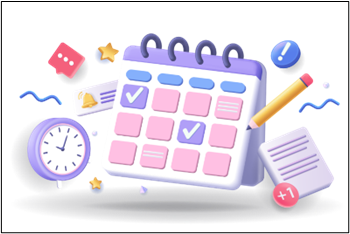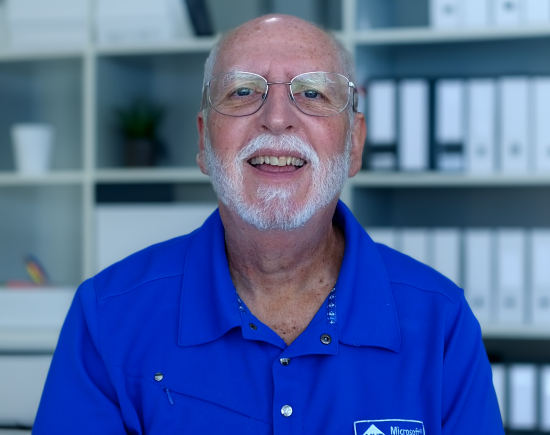Hey there! I recently came across an interesting question on the Tech Community Project user forum. A user was wondering how to tweak the default working calendar to make a 6-Day Work Week in Microsoft Project. Because the user provided very few details in the question, there are actually two ways to address this need. I will share both of them in this article.
If you would rather read a similar article that includes screenshots, click here or click the thumbnail below.

Schedule Every Task Using a 6-Day Work Week in Microsoft Project
Let’s start with the scenario where you want every task in your project to follow a 6-day work week, spanning from Monday through Saturday. Here’s how you can make that happen:
- Open the project you want to work on.
- Click on the “Project” tab to reveal the Project ribbon.
- In the “Properties” section, click the “Change Working Time” button. This opens the “Change Working Time” dialog with the default “Standard” calendar selected.
- Click the “Work Weeks” tab. In the data grid, you’ll see the [Default] item, which defines the default working schedule for the Standard calendar. By default, it’s set to Monday through Friday, from 8:00 AM to 12:00 PM and 1:00 PM to 5:00 PM, with Saturdays and Sundays marked as nonworking time.
- Leave the [Default] item selected and click the “Details” button. A new dialog, “Details,” will pop up.
- In this “Details” dialog, choose Saturday from the “Select day(s)” list.
- Select “Set day(s) to these specific working times” and define your Saturday working hours in the “From” and “To” grid. For example, set it as 8:00 AM to 12:00 PM and 1:00 PM to 5:00 PM.
- Click “OK” to close the “Details” dialog. The “Change Working Time” dialog now reflects the updated working schedule, from Monday through Saturday.
- Click “OK” again to close the “Change Working Time” dialog.
Microsoft Project will automatically update the working schedule for all tasks in your project to follow this new Monday through Saturday working schedule. You’ll also notice that the software displays a gray shaded band only on Sundays in the Gantt Chart screen, indicating that Sunday is the only nonworking day each week.
But wait, we’re not done yet! After updating the Standard calendar, you need to adjust a specific scheduling option in the Project Options dialog.
- Click on the “File” tab and then select “Options” in the lower-left corner of the Backstage.
- In the “Project Options” dialog, go to the “Schedule” tab.
- On the “Schedule” page, change the “Hours per week” option to 48 and then click the “OK” button.
This change ensures that if you enter a Duration value in Weeks for a task, Microsoft Project will correctly schedule it using a 6-day work week, rather than a 5-day work week. For example, if you enter a Duration value of 2 Weeks, the software will schedule the task as 12 working days, not 10.
Schedule Specific Tasks Using a 6-Day Work Week
Now, if you need most tasks in your project to stick to a 5-day work week, but certain tasks require a 6-day work week, you can create a new base calendar for those special tasks. Follow these steps:
- Click on the “Project” tab to display the Project ribbon.
- In the “Properties” section, click the “Change Working Time” button. This opens the “Change Working Time” dialog.
- In the upper-right corner of the dialog, click the “Create New Calendar” button.
- Click it and, in the “Create New Base Calendar” dialog, choose to make a copy of the Standard calendar.
- Give your new calendar a name like “6-Day Work Week” and click “OK.”
- In the “Change Working Time” dialog, click the “Work Weeks” tab.
- Select the [Default] item in the Work Weeks grid and click “Details.”
- In the “Details” dialog, pick Saturday from the “Select day(s)” list.
- Select “Set day(s) to these specific working times” and define the Saturday working hours, like 8:00 AM to 12:00 PM and 1:00 PM to 5:00 PM.
- Click “OK” to close the “Details” dialog. Now, the “Change Working Time” dialog displays the new default working schedule for your custom base calendar, Monday through Saturday.
- Click “OK” to close the “Change Working Time” dialog.
Applying the New Base Calendar as a Task Calendar
So, how do you apply this new custom base calendar to specific tasks that need a 6-day work week? Here’s how:
- Double-click on the task whose schedule you want to change to the 6-day work week. This opens the “Task Information” dialog.
- In the “Task Information” dialog, switch to the “Advanced” tab.
- In the “Advanced” page, click the “Calendar” pick list and select your custom base calendar with the 6-day work week. Also, select the “Scheduling ignores resource calendars” checkbox.
- While you’re in the “Task Information” dialog, head over to the “Notes” tab.
- Here, you can add a note explaining why you applied the base calendar to this task.
- Click the “OK” button to save your changes and close the “Task Information” dialog.
Once you’ve applied the custom base calendar as a Task calendar, the task will be rescheduled to reflect a 6-day work week that includes Saturdays as working days.
Copying Calendars to the Global.mpt File
Lastly, if you want to make this updated Standard calendar or the new custom base calendar available in all your future projects, follow these steps to copy it to the Global.mpt file:
- Click on the “File” tab and then select “Info” in the Backstage.
- In the “Organize Global Template” section on the Info page, click the “Organizer” button.
- In the “Organizer” dialog, go to the “Calendar” tab to see the Calendar page.
- In your active project (on the right side of the dialog), select either the Standard calendar or your new custom base calendar. Choose the Standard calendar only if you made changes to it.
- In the middle of the Organizer dialog, click the “Copy” button.
- If you’re copying the Standard calendar, you’ll see a confirmation dialog. Click “Yes” to overwrite the Standard calendar in the Global.mpt file.
- Close the Organizer dialog.
- Don’t forget to save your latest changes to your project.
And there you have it! You’ve successfully made Saturday a working day in Microsoft Project and learned how to apply this to both your entire project and specific tasks. Plus, you now know how to make these calendar changes available for all your future projects. Happy scheduling!
If you have questions, please add them in the Comments section below. Please check out my other blogs and my YouTube channel. If you would like to have a formal class on using Microsoft Project, here is a link for my classes.
What Type of Microsoft Project Training Do You Need?
Individual and Small Group Training
OnDemand Training at your own pace
Starting at $399

OnDemand Training

Microsoft Project Standard Desktop Training

Microsoft Project Professional Desktop for Project Online Training

Microsoft Project Professional Desktop for Project Server Training

Templates, Student Hand Outs, Tips and Tricks

Certificate of Completion
Medium & Large Group Training
Onsite, Virtual or OnDemand Training
Contact Me for Discounts

Microsoft Project Standard Desktop Training

Microsoft Project Professional Desktop for Project Online Training

Microsoft Project Professional Desktop for Project Server Training

Templates, Student Hand Outs, Tips and Tricks

Certificate of Completion

Automated Training Progress Report

Dale Howard
Microsoft Project MVP “20 Years”
About Me
Hello there Microsoft Project lovers! I’m Dale Howard and I’ve been a Microsoft Project MVP (Most Valuable Professional) for 20 years in a row and I’m currently one of only 26 Project MVPs in the entire world. Pretty exciting, right!?
If you post a question about any of Microsoft’s PPM tools on the public message boards, look to see who the moderator or person that has answered the questions and you see, it’s frequently me answering your questions. Some people like to golf, I love Microsoft Project helping the community get to understand Microsoft Project much better.
I’ve been teaching students at all levels for over 20 years and have taught thousands of users around the world. I’ve written and co-authored 23 books on Microsoft Project, Project Online, and Project Server so if you’re like me and like to read over watching a video, you can Check Out My Books on Amazon.
For the people that like to watch videos, check out my YouTube channel. If you post a question in the comments, I’ll be happy to answer questions or create a new video to answer your question.
If you’ve got a question about Microsoft Project, Project Online or Project Server, check out some of these community post areas below where I am the moderator and have been answering questions on these message boards for over 20 years.
Microsoft Tech Community
Reddit Project Online Community
LinkedIn Project and Planner Group
My Students Include:





Leave a Reply